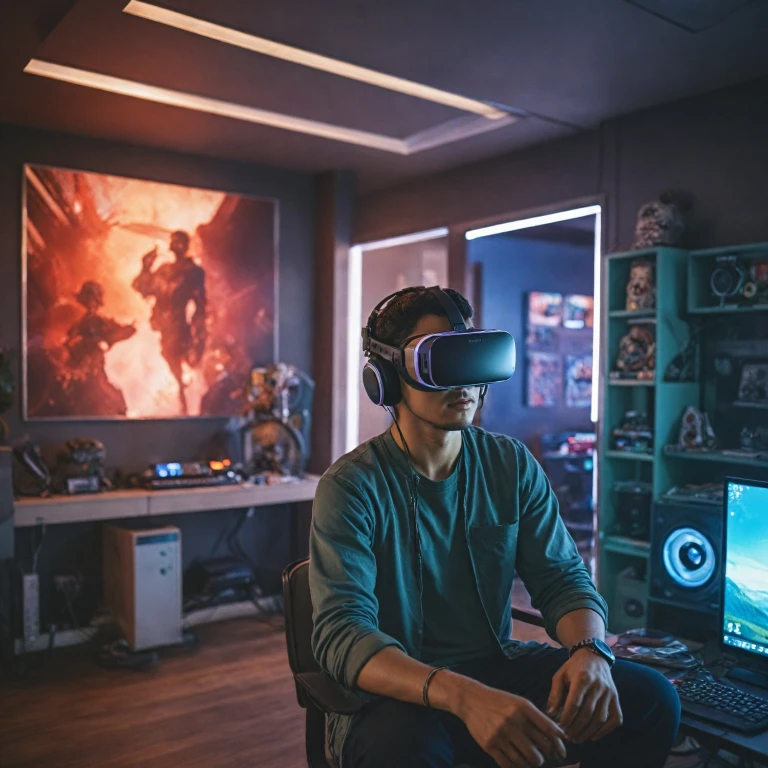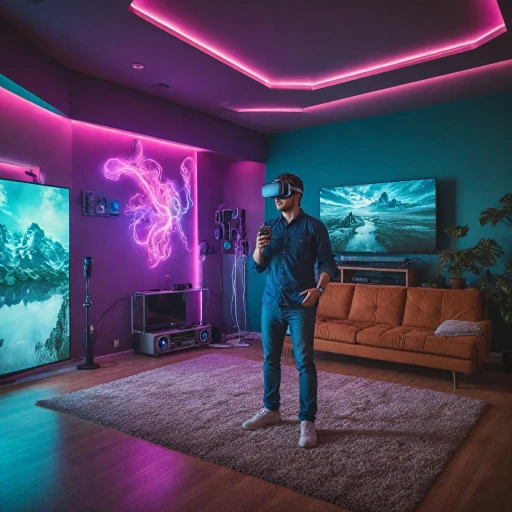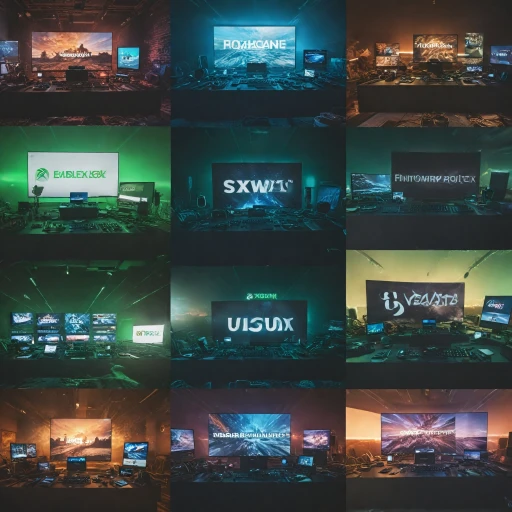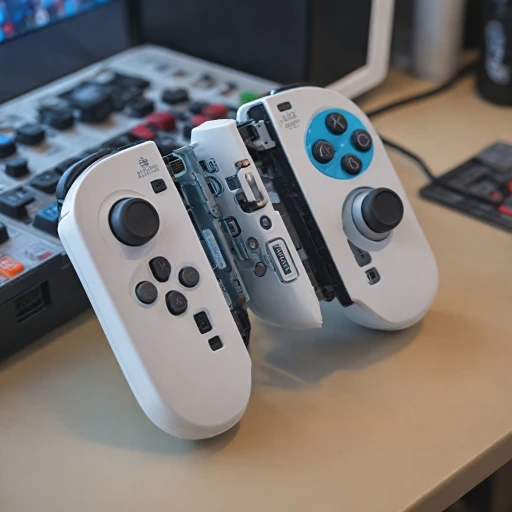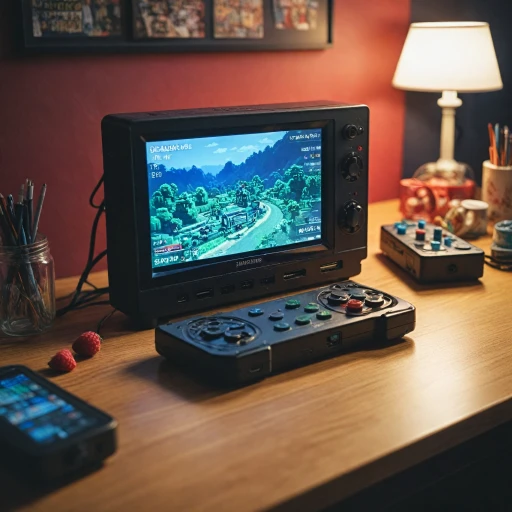
The Current State of VR in Gaming
The Evolution of VR in Gaming
Virtual reality (VR) has become an influential force in the gaming industry, augmenting the way players interact with video games. A standout example of this technological integration is the popular Meta Quest series of headsets, which have gained significant traction in both the United States and the United Kingdom. These products, offered by Meta, have revolutionized VR gaming by delivering a high-quality, wireless experience that's accessible to a wide audience. They set a benchmark for other headsets like the HTC Vive and Microsoft Hololens, which also aim to deliver immersive virtual reality. In recent times, major players in the gaming sector like Microsoft have explored the potential of mixed reality products. The enthusiasm for headsets capable of delivering VR and mixed reality experiences, like the Quest headset series, showcases the hunger for such innovations among gaming enthusiasts. Consumers are increasingly seeking out devices that not only meet but exceed their expectations for delivery and quality. Nevertheless, integrating VR into gaming consoles such as Xbox has not yet seen the rapid evolution some might have anticipated. Despite hopes that Xbox could collaborate with companies producing top-tier headsets, the reality is that no native Xbox headset offering VR capabilities has emerged. Reports from Microsoft have suggested that while they recognize the demand and possibilities, various technical and strategic challenges have left VR integration on consoles like the Xbox series as an area still ripe with potential. To further explore the current options and future prospects of VR with Xbox, interested readers might want to consider exploring more about virtual reality options for Xbox enthusiasts.Xbox and VR: A Missed Opportunity?
The Missed VR Junction
When we talk about Xbox and virtual reality, it's clear that something feels missing. Compared to competitors who have embraced VR technology, Xbox seems to have left a gap in their gaming ecosystem. While PlayStation and PC have dived into VR through devices like the HTC Vive, Vive Pro, and Oculus Quest headsets, Xbox and Microsoft have not made a similar leap.
Microsoft's gaming division has a range of advanced technologies, such as the Microsoft Hololens, offering mixed reality experiences. However, these have not been fully integrated into Xbox's product offerings. One might wonder if Microsoft missed an opportunity to align themselves with popular technology like the Meta Quest series or Meta Horizon, especially when there's been a clear demand for immersive gaming experiences.
This reluctance to engage with VR has left many Xbox users in the United States and United Kingdom seeking alternative ways to combine their favorite console with VR. Yet, the price synergy with a VR headset and headsets like the Quest or Vive Pro might pose challenges for cost-conscious gamers. For those who might have considered bundling a reality headset with their Xbox purchase, the options for headset glasses or controllers specifically designed for Xbox are notably absent.
The demand for VR in the gaming space is undeniable, with mixed reality and virtual reality gaining traction as innovative avenues for delivering fresh gaming experiences. As stars of the video games industry shift towards more immersive gameplay, the lack of an Xbox VR solution prompts questions about how long Microsoft can hold back in this evolving landscape.
Technical Challenges of VR on Xbox
Tackling Xbox's Technical Challenges with VR
Integrating virtual reality with the Xbox, for many, seems like a natural progression given the leaps and bounds the gaming industry is making with VR technology. However, several technical challenges must be addressed before Xbox can fully embrace this virtual realm. For starters, creating a seamless VR experience requires significant processing power and advanced graphics capabilities. Consoles like the Xbox need to compete with dedicated VR setups such as the HTC Vive and the Meta Quest, which have been designed specifically for immersive virtual reality experiences. Moreover, the delivery of VR content on a gaming console raises concerns regarding the latency and responsiveness essential for a high-quality experience. The current generation of Xbox consoles, impressive as they are with 4K gaming, need enhancements to handle the additional demands placed by VR technology. The issue of compatibility with existing headsets is also significant. While Microsoft has experimented with mixed reality tools like the Microsoft Hololens, they have yet to offer a dedicated Xbox VR headset. Without a proprietary headset, Xbox would need to ensure compatibility with headsets like the Oculus Quest, HTC Vive, or the highly-rated Vive Pro. The challenge doesn't end with hardware; software integration is another hurdle. Xbox games developed without VR support need comprehensive updates or redesigns to create compatible, engaging VR experiences. This process involves significant time and resources, potentially increasing the price point for gaming developers and consumers alike. Gaming, at its core, is about enhancing your experience, much like enhancing your gaming experience with a GameBoy Color shell, and VR could be the next step for Xbox — albeit a step filled with challenges that need to be overcome.Consumer Demand for Xbox VR
Understanding the Demand for VR on Xbox Consoles
The demand for virtual reality headsets in gaming has grown significantly over recent years, with products like the Meta Quest and HTC Vive gaining popularity among gamers seeking immersive experiences. This trend raises questions about the potential interest among Xbox users for VR integration. Evidence suggests that the gaming community is ever curious about advancements that could enhance gameplay, and virtual reality is no exception.
Currently, VR headsets such as the Meta Quest and HTC Vive are enjoying a strong market presence in the United States and the United Kingdom. This demonstrates a keen consumer interest, not only in the headsets themselves but also in the worlds they unlock. Despite this demand, the Xbox console has yet to formally integrate such technology into its ecosystem, unlike its competitors who offer VR options as a unique selling point.
Price is a significant factor when considering the adoption of any emerging technology, including VR headsets. Consumers in the gaming market, particularly those invested in Xbox, seek value for money in not just hardware but also the overall gaming experience. The Microsoft Store’s offerings, such as free returns and sponsored top products, could entice potential buyers; however, the absence of a dedicated Xbox VR headset leaves a gap that competitors have filled.
As Xbox users anticipate new and innovative gaming experiences, there is a potential market left unfulfilled by Microsoft's current product lineup. The Xbox could benefit from not only offering a VR headset but also establishing an ecosystem that includes headset controllers and mixed reality integration, akin to the offerings by HTC Vive Pro and Microsoft's own HoloLens. As Microsoft evaluates its next steps, understanding consumer demand and responding with the right offerings could position Xbox as a strong contender in the VR gaming space.
For more insights into why Xbox has yet to fully embrace VR, you may want to explore available options and ongoing developments and explore the potential options for Xbox enthusiasts.
